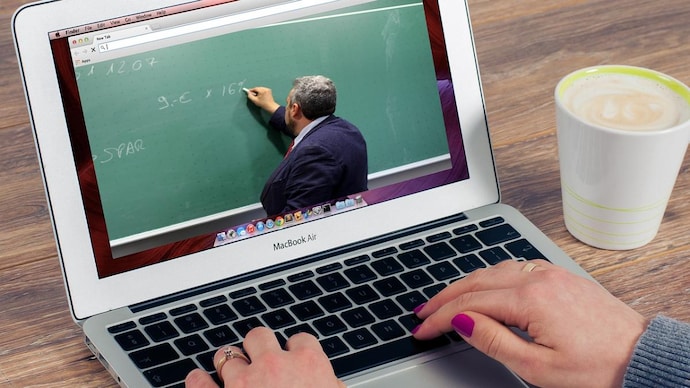Emerging technologies revolutionising the e-learning space
The pandemic has enabled the education sector to overcome the barrier of fear of how to integrate technology in the teaching process effectively.

If 2020 revolutionized the way technology is used in education, 2021 is only going to amplify it further.
The education space, today, is experiencing the power of technology like never before. Earlier, the immersion of technology in the education space was considered a futuristic idea, but today, it has become intrinsic in ensuring the learning journey of students is not disrupted because of the pandemic.
Now that the education sector has warmed up to the role of technology, it is now looking at continuing to innovate and implement a plethora of helpful ed-tech tools to stay at the top.
Before the pandemic, the teaching sector was fearful about incorporating technology in the classroom. However, the Covid-19 pandemic gave them no choice but to adapt to the times and implement technology in their way of imparting education.
The pandemic has enabled the education sector to overcome the barrier of fear of how to integrate technology in the teaching process effectively. It has made them much more tech-savvy and made everybody realize the potential of technology in making teaching more effective.

Technology in education
One of the biggest benefits of integrating technology in education has been the increase in accessibility for students. Today, more people than ever before have access to learning material and the latest curriculum due to the advent of cheap internet and smartphones.
Technology has democratized the learning space. It has made learning available to everyone, everywhere, and all the time. Technology has enabled teaching to occur in a variety of formats, both formal and informal, including MOOCs, webinars, and standard online degree programs.
Regardless of the specific learning method, opportunities to collaborate and hear from professionals and thought leaders directly have made learning interactive, relatable, and widely accessible.
Teachers are using online tools that support collaboration. These online spaces have the potential to allow students to collaborate and extend their learning beyond the physical and temporal limitations posed in a typical classroom experience. These tools also encourage global collaboration by allowing web-based access to the collaborative space in which the learning is taking place.
Artificial Intelligence in education
Technology such as Artificial Intelligence (AI) is increasingly being embraced to enhance the testing system. Artificial intelligence drives efficiency, personalization and assists teachers in streamlining admin tasks such as grading. This in turn allows them the time and freedom to provide understanding and adaptability to their students.
AI allows learning to be customized to each student’s needs, letting them adjust the speed and control iterations as per their understanding, thus enhancing the subject’s expertise. With the onset of growing numbers of adaptive learning programs, games, and software, AI has made education individualistic and personalized.
These systems respond to the needs of the student, putting greater emphasis on certain topics, repeating things that students have not mastered, and helping students to work at their own pace, whatever that may be. AI has made tutoring and studying programs more advanced thus ensuring a better understanding of concepts for students.

VR as teaching method
Virtual Reality (VR) is another upcoming technology that is being incorporated into the teaching method. It is being considered a medium to enhance student learning and engagement.
VR creates a virtual world that is visually appealing as well as interactive, thus imparting an immersive learning experience, being able to visualize and feel what you are learning, puts a less cognitive load on students to process the information, thus allowing them to fully grasp their concepts.
VR assists students with learning and knowledge retention. It can contribute towards enhancing and improving the learning experience by providing students the chance to apply the skills they are being taught from their classroom in a more possible, everyday scenario.
While virtual reality still has a long way to go until it can fully be incorporated into the classrooms, it is one of the technologies that will improve the education sector.
Machine learning sector
Another popular technology that is increasingly gaining momentum in the education sector is Machine Learning. Machine Learning analyzes a student’s performance in real-time, modifies teaching methods and the curriculum based on that data.
It helps to have a personalized engagement and tries to adapt to the individual for a better education. By identifying weaknesses, Machine Learning enables better content organization and curriculum management. It helps in filling the gaps in understanding, thus making learning more effective.
Other technologies that are predicted to be a part of the education sector in the future include the adoption of 5G technology, 3D printing, augmented reality, and automation. These once futuristic concepts will continue to be implemented in more classroom settings to deliver an enhanced learning experience.
If the role of technology in 2020 was adoption and adaption, in 2021 it will be about personalization and effectiveness, as more and more people would warm up to the role of technology in the learning space.
Article by Mr Ajit Chauhan, Chairman, Amity University Online
Read: Explained: Here's why students should study machine learning
Read: Precautions that schools should enforce while preparing for the post lockdown period
